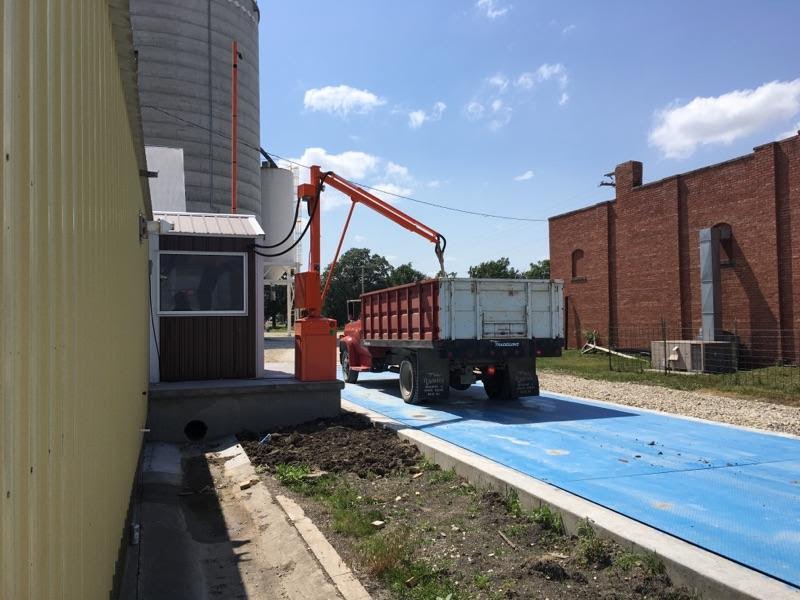Harvest continues to plod along into the second week of July, and farmers who still have wheat left to cut are facing rain delays and hail, leading to a long, drawn-out wheat harvest.
From July 3 to July 9, there were only 4.1 days suitable for fieldwork, according to the USDA’s National Agricultural Statistics Service (NASS) crop progress report for the week ending July 9, 2023. Harvest is now 59% complete, well behind 93% last year and 84% for the average.
Farmers are balancing a mix of emotions from frustration caused by having to wait for conditions to dry, stress of potential hail and other weather events, with joy from these recent rains.
Northwest of Hays, Eric Werth, General Manager at Golden Belt Coop acknowledges some of the struggles he has seen in Ellis county.
“We are really just waiting for it to dry out around here,” Werth says.
Werth speculates they are about 90% wrapped up with harvest for this year. Another stressor that Werth describes is the amount of weeds that the rain has brought with it.
After a late start on June 21, Werth reports that he is expecting probably 55% of the quantity they have gotten in years past. Yields are averaging around 30 bushels per acre, with some brighter spots getting up to 40 bushels per acre.
“That is definitely not the majority, though,” Werth says. “The [Westbred] Grainfield variety is one that seems to be doing well this year.”
Looking at test weights is encouraging for this area, though, seeing those come in around 62 pounds per bushel. However, proteins have been relatively low this year. He guesses they have taken in about 450,000 bushels so far. He said most of the wheat his elevator receives ends up at flour mills.
Seventeen miles west of the geographical center of the continental United States, Bruce Williams at Trinity Ag in Smith Center says his area has been subject to the rain delays as well.
“The thing that hurt us the most is we’ve basically cut very little since July 4th,” Williams noted. “There has been so much humidity.”
Williams said harvest began on June 24 this year, only four days off from when they usually start cutting, but after these recent rains, harvest has been slow to get back up and running. Having had big days on July 3 and 4, they have not had a single, full week of continuous cutting this harvest.
Initial drought stress caused some decent test weights in earlier loads to the elevator. Test weights were about 60-63 pounds per bushel, but these later storms have caused those numbers to dip into the 58 pound per bushel range. Proteins in the area have been as high as 12 to 14 percent. Yields have been all over the board, but even with farmers starting with their best fields, yields were only 35-40 bushels per acre. Many farmers have been abandoning their fields, as the weed pressure has been so intense. The kochia and pigweeds have been so dense that in some of the more extreme cases, you cannot even see the wheat as you drive past fields.
Along with the rain, northwest Kansas has been hit with hail storms. Fortunately, not much of the crop has been destroyed. Smith and Phillips counties are expecting to see more rain and storm chances in the upcoming week.
Elevators and farmers aren’t the only ones waiting for conditions to dry. Custom harvest crews like MJB Harvesting out of Grainfield, Kansas, are anxiously waiting to get out and begin harvesting. So far, MJB Harvesting has only been able to cut one field while in Kansas.
Mark Bosse, owner of MJB, shared that nearly all of their customers in Kansas have been affected by either hail or drought, or both. Fields that were going to be decent are now looking to only be 15-35 bushels per acre. The one field the MJB crew has been able to cut so far yielded about 35-40 bushels per acre. Several producers along the Gove and Lane county line will not even harvest their crop.
Composed of local people, high schoolers and J-1 visa employees, the MJB harvesting crew has been on the road since May 22. They started in Texas and will go all the way up into Montana. Although conditions were good in Texas, the wheat got bleak as they progressed north. Fortunately for them, crop conditions are looking up for areas north of Kansas, rounding out a very interesting wheat crop year.
_ _ _
The 2023 Harvest Report is brought to you by the Kansas Wheat Commission, Kansas Association of Wheat Growers, Kansas Grain and Feed Association and the Kansas Cooperative Council. To follow along with harvest updates on Twitter, use #wheatharvest23. Tag us at @kansaswheat on Facebook, Instagram and Twitter to share your harvest story and photos.



